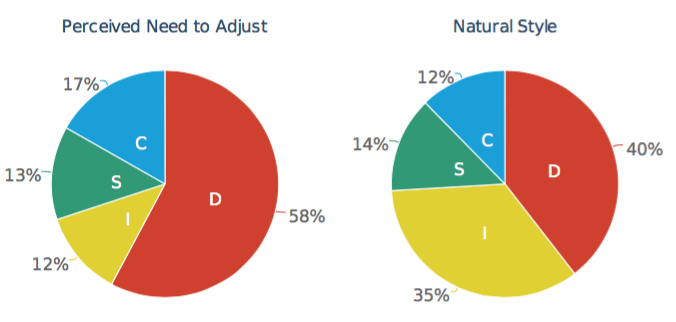Chances are you’ve been asked, “What makes Extended DISC different from other DISC tools?” They are not all the same. The distinction between the assessments is critical to getting the right information to actually improve communication skills.
Is there a difference?
No one owns DISC or the theory, it is public domain. However, there are companies that have their proprietary reports and questionnaires using this theory. One of the more common questions we get asked is, “What makes Extended DISC different from other tools?” Is there a difference?
There is a difference. A major difference between Extended DISC and other DISC is that they do not always measure the same DISC-style. Our tool measures a person’s natural style or “hard-wired style.” Other tools only measure a person’s adjusted style. The adjusted or “role style” focuses on what individual feels he or she needs to be at this role. The report results give you the information you need to truly adjust behavior. By focusing on your natural DISC style; not just the style you think you need to be, allows successful modifications. One client said “DISC measures who shows up on the first date and Extended DISC who you are in a relationship 5 years later.”
What do people like and not like about DISC?
First off, the model itself is in the public domain. No one owns the theory. Clients have long said the simplicity of DISC is one of the major strengths of the tool. It’s easy to learn, understand and use with practice. It becomes a common language that people can communicate with.
On the flip side some people find the model too simple. Other tools lack the depth they need for many applications and are perceived as too general and weak. Some tools don’t provide enough depth beyond a training activity. There are DISC tools that only measure how you need to be in your current role which is changeable over time. This only provides you with “face validity” which is more superficial.
Measuring who the person is
Unconscious behavior describes the most natural style for a person to behave. It requires least energy, is least stressful and allows to person to behave most effectively in a longer period of time. Measuring unconscious behavior is more difficult than conscious behavior. About 90% of our clients are former old DISC users who have upgraded their assessments to Extended DISC. The rest use some other types of assessments.
MBTI® is a very powerful tool that excels at self-discovery. However, it is difficult to remember the four letter combinations and to use in identifying the styles of others. When a tool is complicated to use then it is more likely not to be put into practice.
Extended DISC different from the rest
The tool takes the best of both worlds. It provides more “horsepower” to allow users to go wider and deeper in application. Again, our tool measures a person’s natural style or “hard-wired style.” Other tools only measure a person’s adjusted style. You are able to identify who you truly are and put into practice the user-friendliness of the DISC model.
Another way to look at what makes Extended DISC different is understanding the difference between unconscious and conscious behavior. Conscious behavior is the behavior that requires adjustment. Modifications to behaviors uses energy. Individual feel that the adjustment to where they “need to be” will make them successful. On the other side is unconscious behavior. This is your in-grained, hard-wired behavior. It is who you are. DISC tools have traditionally focused on conscious behaviors. This is what makes Extended DISC different. Ultimately, this creates a tool that is the simple and practical, but also has the power of tools like MBTI®.
Additional benefits
There are other benefits that make Extended DISC different. Clients love the option to customize reports for appearance, content, industry, work role, and culture. The tailored reports provides respondents with the most relevant, valid assessment. Our clients are able to offer assessments that are specific to roles like Sales Manager, Customer Service Reps, and Executive Leadership. Another reports benefit is the ability to create Work Pair, Team, Department, and Organizational Assessments without having to ask employees to complete another questionnaire.
Validity is important when it comes to using behavioral assessments. Tools that force out assessments regardless of responses cannot be accurate. Guessing or forcing choices is deceiving and not useful in making behavioral changes. This makes Extended DISC different because an invalid result indicates that a consistent identification of a DISC style was not given. It is not necessarily a bad result, but it is prevents the respondent from make important decisions based on the wrong information. The assessments are extensively and continually validated worldwide.
You have access to a admin account that allows you to manage your assessments online and view DISC results to support organizational analyses and development. We provide technical support, an online client resource center, support materials, access to DISC coaches.
In the end, there are always more features Extended DISC has over the competition. The ones we highlighted above are mentioned most often by our clients.

